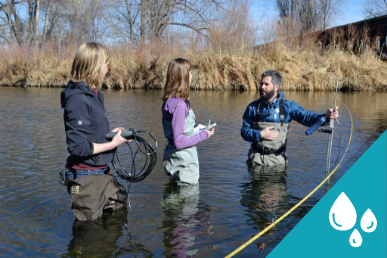Colorado Water Center
A Unit of the Office of Engagement and Extension

Leading the Nation’s Water Research Since 1965
For nearly six decades, The Colorado Water Center has served the greater Colorado community to lead interdisciplinary research, education, and engagement to address today’s most pressing water issues in Colorado and beyond, and connect diverse water stakeholders to resources and expertise.
The Colorado Water Center is one of 54 Water Resources Research Institutes created by the Water Resources Act of 1964, which collectively form the National Institutes for Water Resources.
Colorado Water Center’s History
Colorado State University can trace its commitment to water to 1883 when Professor Elwood Mead – the man for whom Lake Mead is named – arrived on campus and formulated plans to teach irrigation engineering. Since then, CSU’s reputation as a leader in water research has continued to grow. Other notable moments in our water history include:
The Colorado Water Center (CoWC)
Formerly the Colorado Water Resources Research Institute and then the Colorado Water Institute was established in 1965. CoWC facilitates interdisciplinary study and research with Colorado’s institutions of higher education.
CSU’s Watershed Science Program
The Watershed Science Program was established in 1958, making it the first-degree program in the nation to train students in this area of study.

